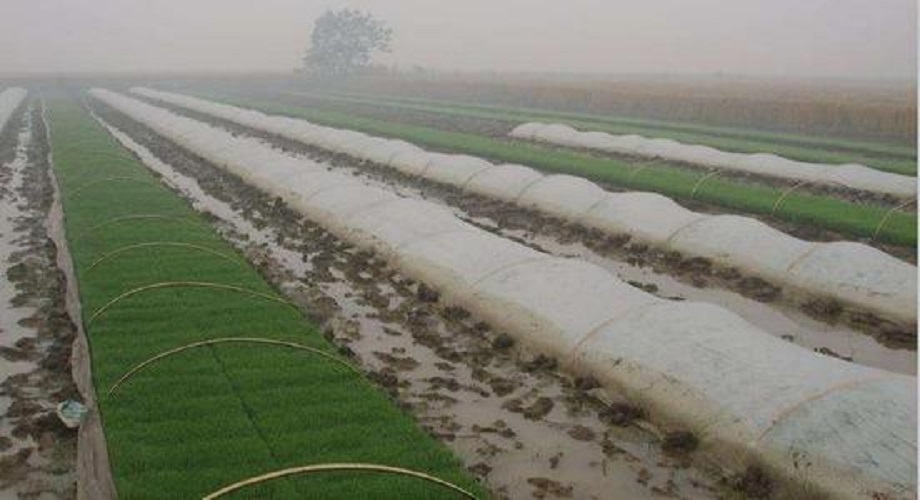
Non-Woven Industry Development. Nonwoven fabrics are a product of the petrochemical industries after the development of plastic cloth (film). It is lighter and better well ventilated than plastic. It is commonly utilized in medical, sanitary, and filtering products, as well as engineering applications, such as sanitary napkins, facial towels and filters. Non-woven fabrics are used in the production of vegetable products to protect against cold damage. Although the production of non-woven fabrics is more complicated than plastic film, the ingredients are basically the same. This includes PVC (polyvinyl chloride) PET (polyethylene), EVA [Ethylene Vinyl Acetate copolymer], PVA (polyvinyl alcohol) and so on. When you inflate a traditional plastic film using heat, it produces thin film. The film is continuous. It is able to stretch indefinitely. The surface of the film is free of pores. It is an impermeable material that prevents the exchange and movement of molecules. Following the expansion of the textile industry, synthetic chemical fibers derived from the above-mentioned raw materials replaced the majority of natural plant fibers and were the hottest item in the textile industry. These chemical fibers, however are still able to be transformed into cloth by the traditional warp-weft weave. The non-woven material is made by interconnecting fibers in the same plane at different angles across all directions. It is not possible to make use of traditional weaving and warp methods. Compared with traditional woven fabrics, it has better material properties, and its production process can go from the raw material to final products in one go. The traditional method of weaving and drawing fibers is removed. The production costs are lower. The past few years have seen the introduction of an array of non-woven fabric being utilized in the fashion industry. Because of advances in the field of material science as well as the development of production technologies non-woven fabrics have become more versatile and is employed more frequently. Diverse materials and products can be seen everywhere in our life. Non-woven fabrics are getting more widely used in agriculture because of their ease of production, lightness, flexibility, low cost, and many applications. Check out this non woven weed control fabric for recommendations.

Non-woven Fabrics for the Agricultural Industry. Non-woven fabrics first came into use in Europe in the year 1978. They were used to keep the carrots warm during early harvesting and prevent the spread of tomato leaf virus and whiteflies. In the United States non-woven fabrics are used for the mulching of sweet peppers, cantaloupes tomatoes roots, carrots, root vegetables and radishes, cabbage lettuce, and various other vegetables. They are used to keep heat in check, as well as early harvesting and pest control. Non-wovens are a great way to cover grass-proof mats , and improve the soil's temperature. A short fiber is used to make water-absorbing blankets which are applied to nursery beds, allowing the roots to fully absorb water. They can serve as the base medium for the production of turf, or as lawn grass to moisten, drain, and divide the garden. They can also be used as plant bags for larger woody species like fruit trees and gardens trees. Non-woven fabrics are also employed as crop cover in Taiwan. Non-woven fabrics are extensively used in large greenhouses for energy conservation as well as environmental control. Canopy curtains are double-layered , and cut down heat absorption and radiation in the evening. At first, TAVIK non-woven spun-bonded TAVIK fabrics of high density were used to shade and protect cauliflower bulbs. Because of its high shading ability, low thermal conductivity, as well as its easy recycleability, it quickly accepted by farmers. It was later employed to keep leaf vegetables safe from insects, and to shade trees and the fruit trees. Due to Taiwan's unique climate and ecology the development of the industry of non-wovens is slow. Taiwan non-woven fabric makers continue to develop non-woven technologies, with focus on air permeability, water absorption, as well as water repellency of non-woven fabrics. It is used to preserve and store agricultural products. Look at this agriculture non woven fabric suppliers for more information.
